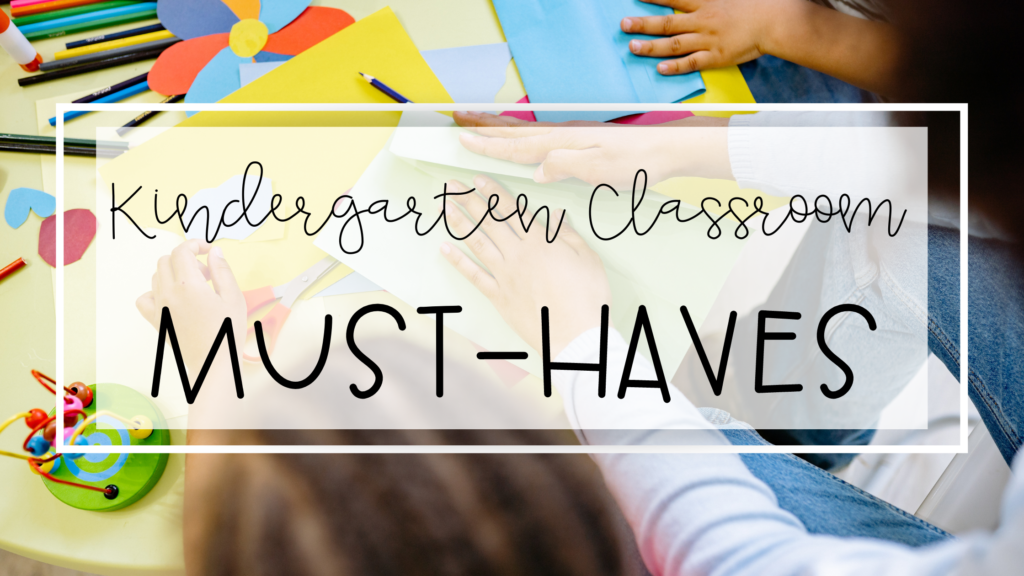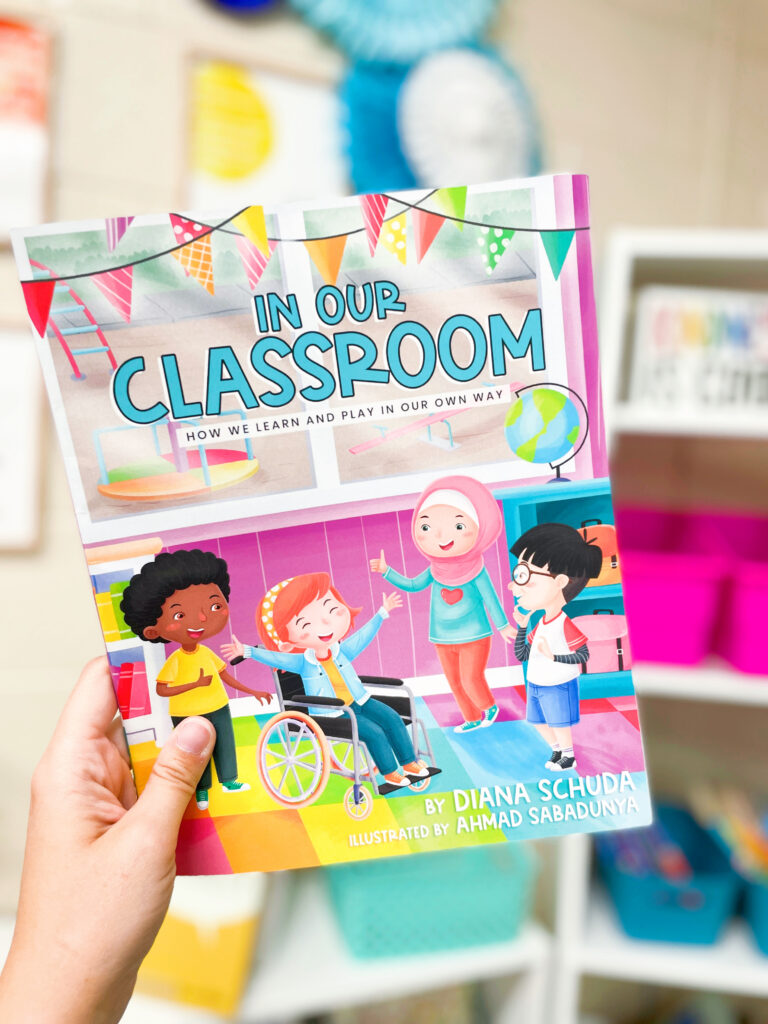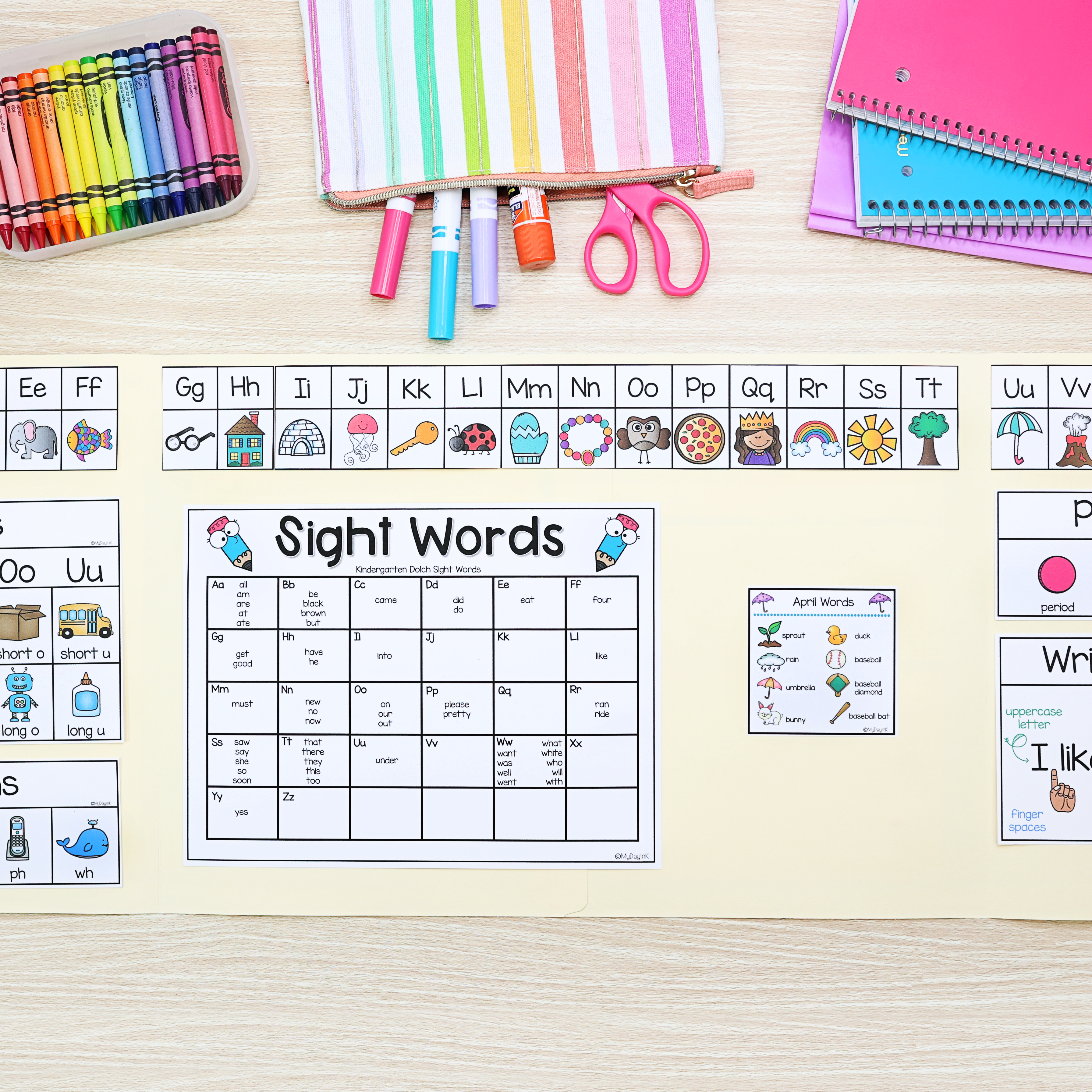Kindergarten Classroom Must-Haves For First Year Teachers
Congratulations, new kindergarten teachers! As you start this exciting journey, I know there’s a lot of stuff going on in that brain of yours! There is so much to get done before the year starts, and it can be challenging to figure out exactly where to start. I’m gonna help guide you through setting up your classroom, organizing different zones, creating a shopping list, and setting goals for the first couple of days. I promise this blog post is full of helpful tips to ensure a successful start to your first year teaching kindergarten and will give you all the kindergarten classroom must-haves to ensure your school year is ah-maze-ing!

Kindergarten Classroom Must-Haves and Classroom Set Up
If you read my 18 tips for first-year kindergarten teachers blog post, you may have wanted a little more information on each part. Well, you’ve come to the right place. I decided to break that very large blog post into a 4 part series. You’re now reading part 1: Setting Up the Classroom. I’ll get into some kindergarten classroom must-haves, helpful hints, and even some product suggestions you may want to include on your shopping list. But we’ll get to all of that soon!
Setting Up the Classroom
Creating a warm and inviting environment is crucial for your kindergarten students to feel comfortable and excited about learning. You want students to know it’s a place for learning and a fun, inviting space where mistakes can happen and messes will be ok (sometimes, haha).
Classroom Layout
Arrange your classroom to accommodate various learning activities. Set up distinct areas for reading, writing, pretend play, and fine motor skill development. This division encourages a well-rounded learning experience for your students. Designate different zones within the classroom to foster independent exploration. Establish centers for art, science, math, and sensory activities. These areas allow children to engage in hands-on experiences and develop crucial skills.
Different Zones of the Classroom
Setting up distinct zones in your kindergarten classroom helps facilitate focused learning. It also allows you to set up specific routines for each zone of the classroom. You can easily display different direction visuals to help students know exactly what they need to do when in each zone. Consider incorporating the following areas:
Writing Zone
Provide a dedicated space for developing early writing skills. Supply the area with various writing materials, such as pencils, magnetic letters, crayons, markers, and different types of paper. I like having whiteboards available as well. If you have students who need help with their writing grip, these triangle pencils are awesome too! Display sight words and alphabet charts to promote literacy. You may want to keep some writing offices in this zone too!
Pretend Play Zone
Foster imaginative play by designating a corner for dress-up clothes, play kitchen sets, and props that stimulate creativity. This zone allows children to role-play, enhance social skills, and explore different roles and responsibilities.
Reading Zone
Design an area where students can explore books independently or in small groups. Display age-appropriate books on accessible shelves and create comfortable seating arrangements to encourage reading engagement. Create a cozy reading nook filled with colorful books, cushions, and scoop rockers. Encouraging a love for reading from an early age is essential, and this space will serve as a sanctuary for imagination and discovery. Include books that are important for your classroom, like books focused on respect, responsibility, and a growth mindset.

Remember, you can explore garage sales, create a giving tree or wish list to display at open house, check out library book sales, and more to find cheap finds for your classroom!
Making a Shopping List
To ensure you have everything you need, creating a shopping list is essential. Here’s a list of some classroom must-haves for your first year of teaching kindergarten. Many of the items may be brought in with students on the first day of school. Double-check with your school secretary or your team teachers. See what the students are bringing or what the school is supplying students with.
Basic Supplies
Hopefully, students will be bringing in supplies like pencils, crayons, markers, glue sticks, scissors, construction paper, and tissues. With them on the first day of school. You may want to stock up on things like cleaning wipes. Some schools do not allow teachers to ask for cleaning supplies; you may need to supply your own or ask where you can find them. So double-check on that! During cold and flu season and when the stomach bug hits your classroom, you definitely going to want to have those on hand!
Organization Tools
Every teacher and classroom should be organized. Being organized will allow you to leave your room at your contracted time and know where everything is when you walk in the next morning. Consider purchasing things like storage bins, magnetic hooks, hooks, and labels to keep supplies and student materials tidy and easily accessible.
Setting Goals for the First Couple of Days
Starting the school year on the right foot is vital. When students walk in on that first day, you want to have some sort of plan. You can’t just wing it with kindergarteners, it will become a very hectic and crazy day! Here are some goal-setting tips for the first few days of kindergarten:
Establish Routines
Teach and practice essential routines, such as lining up, entering and exiting the classroom, and transitioning between activities. Consistency in routines helps students feel secure and allows for smoother classroom management. Use visual directions throughout your classroom as constant reminders for students. Stick magnets to the pack of each visual to easily display on your board.
Build Relationships
Focus on creating a positive and welcoming environment. Get to know each child individually and encourage peer-to-peer interactions. This helps students develop a sense of belonging and fosters a supportive classroom community.
Introduce Expectations
Clearly communicate behavioral expectations, such as listening attentively, following instructions, and taking turns. Reinforce positive behaviors and use gentle reminders when needed.
When you start your first year as a kindergarten teacher, remember that teaching kindergarten is a unique and rewarding experience. By setting up your classroom effectively, organizing different zones, creating a shopping list, and setting goals for the first couple of days, you’ll be well-prepared to provide an engaging and enriching learning environment for your students. Remember to seek support from fellow teachers through professional development opportunities, mentor programs, and even consider becoming a member of The First 25 Days of K Course where you will get everything you need to have a successful school year with little to no stress!



